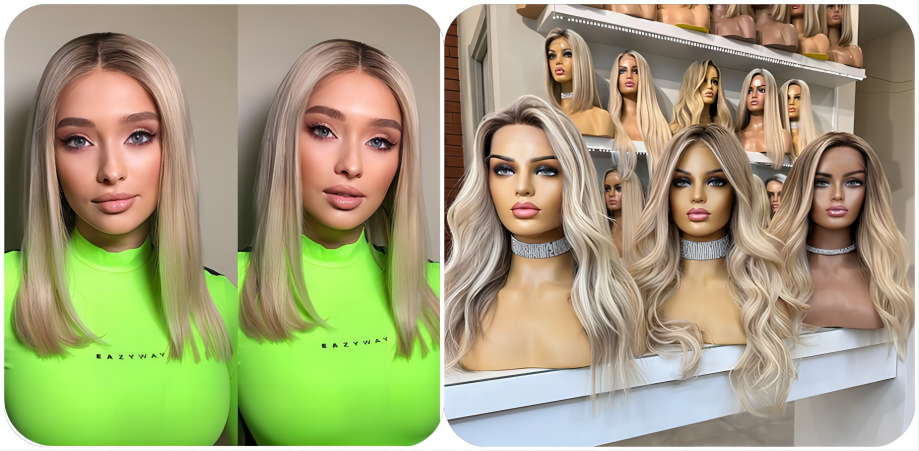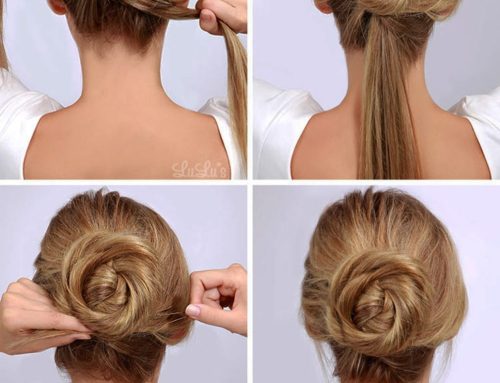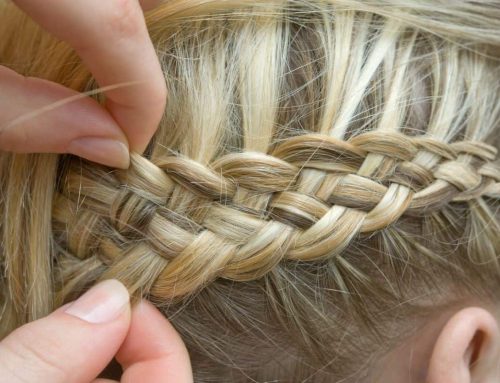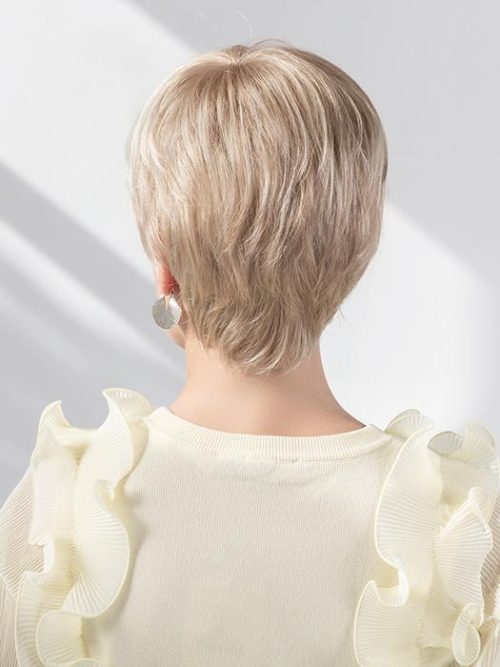Introduction
For numerous women, incorporating wigs into their daily regimen is essential, especially for those grappling with hair loss. Synthetic wigs, in particular, offer a cost-effective avenue for experimentation with different styles or for temporary wear. However, the prominent drawback lies in their tendency to appear obviously artificial.
In the subsequent sections, we’ll delve into effective strategies to enhance the realism of synthetic wigs. This guide encompasses various aspects ranging from wig selection to styling techniques and maintenance practices.
Factors Contributing to Synthetic Wigs’ Artificial Appearance

Synthetic wigs often bear an artificial semblance due to the inferior quality of fibers utilized in their construction. These fibers lack the finesse and authenticity inherent in natural hair. Furthermore, synthetic strands typically possess a uniform texture and an unnatural gloss, rendering them less lifelike compared to human hair, which exhibits nuanced variations in texture and sheen.
Another pivotal factor contributing to the artificiality of synthetic hair lies in its fixed styling, which limits versatility. Unlike human hair wigs that can be tailored to desired styles using hot tools or by undergoing cutting and shaping, synthetic counterparts lack such adaptability without risking damage to the fibers. Nonetheless, advancements in synthetic wig technology have led to the emergence of more realistic options on the market. Superior varieties in plastic fiber synthetic hair, such as Toyokalon, Modacrylic, and Kanekalon, boast enhanced realism. Additionally, certain synthetic wigs feature hand-tied caps or lace fronts, mimicking the appearance of a natural hairline.
While synthetic wigs may not always rival the natural appearance of human hair, they remain a viable choice for individuals seeking an economical and low-maintenance alternative.
Optimal Wig Choices for Natural Appearance
Human hair wigs reign supreme in terms of natural appearance, owing to their composition of authentic hair sourced from donors and meticulously processed to emulate natural strands. Their versatility allows for styling and parting akin to natural hair, facilitating the attainment of personalized hairstyles tailored to individual preferences.
Furthermore, the texture and sheen of human hair contribute to its lifelike semblance, a feat challenging to replicate with synthetic fibers or alternative materials. However, it’s imperative to note that human hair wigs often command a higher price tag and entail more rigorous maintenance routines. Nevertheless, high-quality synthetic alternatives, such as lace front wigs, can rival human hair wigs in realism, especially with features like lace fronts that create a seamless hairline.
Enhancing the Realism of Synthetic Wigs
The positive impact of wigs on women experiencing hair loss is well-documented. However, the telltale artificial appearance of synthetic wigs poses a significant challenge. To mitigate this issue, employing certain techniques can yield more realistic results. Below are some curated tips:
Tip #1: Meticulous Wig Selection

When procuring a synthetic wig, prioritize options that closely mimic the texture and luster of real hair. Avoid cheaper variants utilizing inferior fibers, as they tend to exhibit a plastic-like sheen, detracting from authenticity. Here’s a comprehensive guide to aid in your selection process:
- Deliberate on the material: Assess whether a synthetic or human hair wig aligns with your budget and maintenance preferences.
- Style considerations: Factor in your face shape, personality, and lifestyle when selecting a wig style. Opt for styles featuring natural baby hairs for a seamless hairline.
- Color coherence: Opt for wigs with multi-tonal shades or rooted colors for enhanced realism. Alternatively, customize wigs with root effects using makeup or seek professional assistance for highlights or lowlights.
- Cap construction scrutiny: Prioritize monofilament or lace front wigs for their natural appearance and styling versatility. Ensure a snug and comfortable fit.
- Trial fittings: Always try on wigs to ascertain proper sizing and to compare styles and colors.
- Professional consultation: Seek guidance from hair specialists for personalized recommendations and maintenance advice.
Tip #2: Tailoring the Fit

Adjusting the fit of your synthetic wig is pivotal to enhancing its natural appearance and ensuring comfort. Follow these steps for optimal fit customization:
- Accurate sizing: Measure your head circumference using a cloth tape measure and adjust the wig accordingly using adjustable straps or hooks.
- Secure fastening: Ensure the wig sits securely on your head without excessive movement, employing wig adhesive tape or glue if necessary.
- Attention to detail: Pay heed to the snugness of the wig to prevent a loose or ill-fitting appearance.
By adhering to these tips, you can substantially elevate the realism of your synthetic wig, bolstering confidence and comfort in its wear.
Exploring Ways to Enhance the Realism of Synthetic Wigs
Synthetic wigs, while offering convenience, often struggle to achieve a natural appearance due to inherent limitations. Here, we present a comprehensive guide to elevating the realism of synthetic wigs.
Strategies for Styling Synthetic Wigs
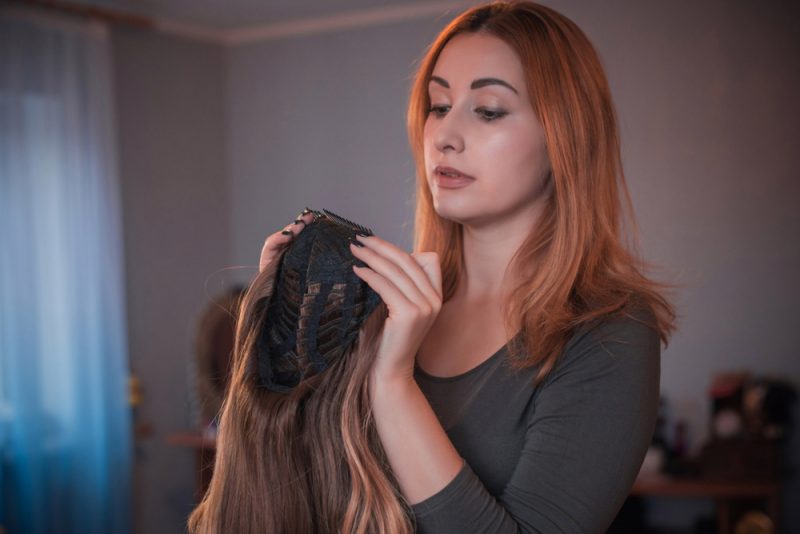
Styling constitutes a crucial aspect in imbuing synthetic wigs with a more authentic allure. Before embarking on styling endeavors, meticulous planning is essential. Consider consulting with a professional hairstylist proficient in wig styling. Here are expert tips for styling your synthetic wig:
-
Exercise Caution with Heat Tools: Synthetic fibers are susceptible to heat damage. Utilize low heat settings and refrain from prolonged exposure to heat. Opt for a heat protectant spray tailored for synthetic hair when necessary.
-
Precision Trimming: To enhance naturalness, meticulously trim the ends of the wig hair using sharp scissors. Employ specialized wig shears or razor blades to achieve soft, natural-looking edges.
-
Introduce Layers: Incorporating layers or jagged edges into the wig hair can amplify its natural appearance. Skillfully thinning out the wig prevents a bulky, artificial look, ensuring seamless integration.
-
Secure Styling with Hairspray: Upon achieving the desired style, employ a light-hold hairspray to set it in place. Select a hairspray formulated for synthetic hair to avoid undesirable effects.
Mastering the Art of Wearing Synthetic Wigs
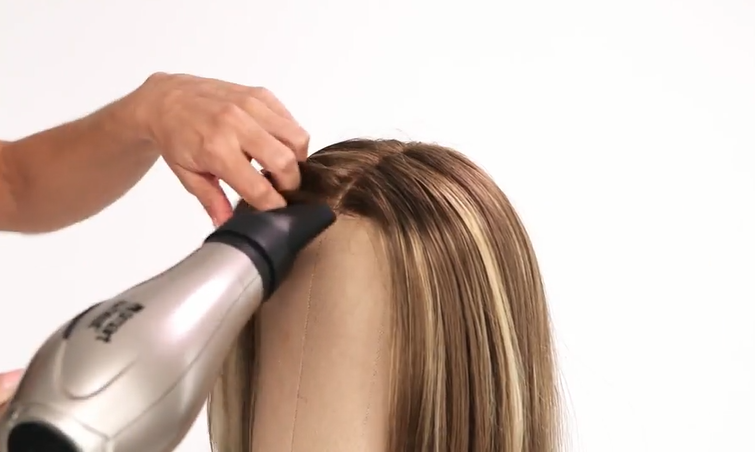
Proper application of the wig is pivotal in achieving a convincing, natural look. Prioritize these tips for optimal wear:
-
Mindful Hairline Consideration: The delineation of a natural-looking hairline is paramount. Employ a wig cap to create a smooth base and ensure a snug fit. Adhesive tapes or glues can be utilized judiciously to enhance adherence, but exercise caution to prevent damage or irritation.
-
Precision Placement: Align the synthetic wig meticulously with your natural hairline. Begin by positioning it just above your eyebrows, gradually adjusting to match your natural hairline. Utilize adjustable straps for a secure fit.
-
Harmonize with Natural Hair: Style any exposed natural hair to harmonize with the wig, facilitating a seamless transition and enhancing overall realism.
Accessorizing for Enhanced Naturalness
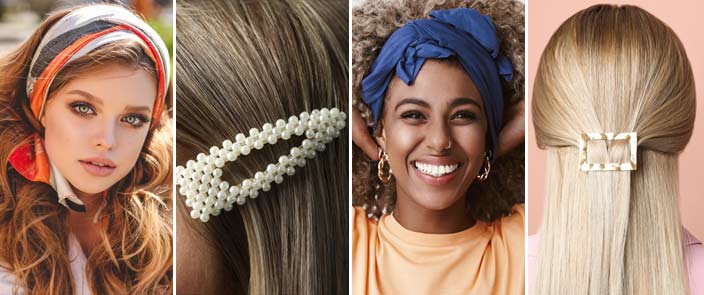
Accessories serve as invaluable tools in augmenting the natural appearance of synthetic wigs. Consider integrating these accessories into your styling routine:
-
Headbands: Opt for headbands to conceal the wig’s hairline, blending it seamlessly with your natural hair. Select shades matching your skin tone or the wig’s lace front.
-
Scarves: Utilize scarves to camouflage the wig’s hairline, creating a more authentic part. Experiment with various tying techniques for versatile styling options.
-
Hair Clips and Bobby Pins: Employ hair clips and bobby pins to secure the wig in place, preventing shifting. Choose colors complementing your hair or wig for discreet integration.
-
Hair Ties: Fashion low ponytails or buns with the wig using hair ties to enhance naturalness. Experiment with diverse hairstyles to find your signature look.
Maintaining Synthetic Wigs for Longevity
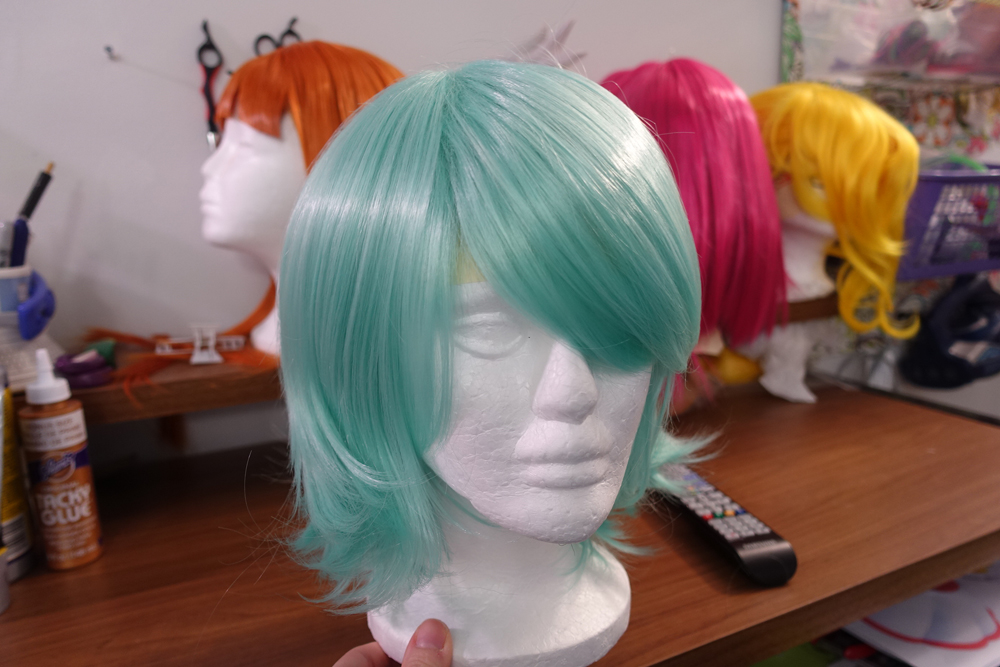
Proper maintenance is imperative in preserving the integrity of synthetic wigs. Follow these guidelines for optimal care:
-
Regular Washing: Cleanse the synthetic hair with cool water and gentle shampoo formulated for synthetic fibers. Handle with care during washing and drying to prevent tangling or breakage.
-
Proper Storage: Preserve the wig’s shape by storing it on a mannequin head or wig stand when not in use. Shield from direct sunlight and heat sources to prevent damage.
-
Avoid Heat Exposure: Refrain from subjecting synthetic hair to heat sources, including hairdryers and curling irons, to prevent fiber damage and color fading. Employ detangling sprays or fabric softener solutions for taming frizz and knots.
By adhering to these recommendations, you can prolong the lifespan of your synthetic wig while maintaining its natural appearance.
Optimal Product Selection for Synthetic Wigs

Choosing the appropriate products is pivotal in preserving the appearance of synthetic wigs and avoiding potential issues like discoloration. Optimal product selection can significantly contribute to achieving a more natural look. Consider the following guidelines:
-
Dry Shampoo Selection: To prevent discoloration, opt for dry shampoo formulations tailored to the specific shade of your synthetic wig. For instance, brunettes should utilize dry shampoo designed for dark hair. Achieve a natural hairline by applying powder along the lace where it meets the skin.
-
Wig Spray or Serum: Incorporating wig sprays or serums into your routine aids in taming frizz and enhancing shine, thereby imparting a more natural appearance to synthetic hair. However, exercise caution to avoid over-application, which can result in a greasy or oily appearance.
Effective Methods for Softening Synthetic Wigs
Method #1: Fabric Softener Application
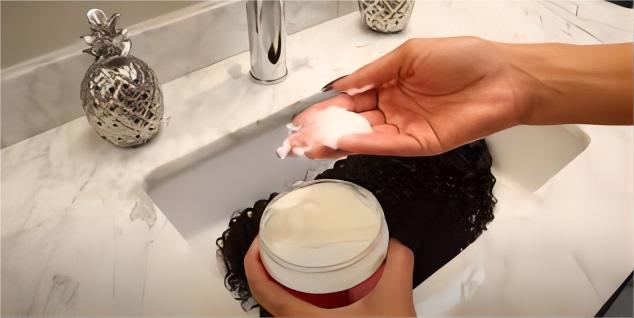
Fabric softener proves to be an efficient solution for softening synthetic wig fibers. Prepare a solution by combining one part fabric softener with three parts water in a spray bottle. Thoroughly distribute the solution over the wig’s fibers, ensuring comprehensive coverage. Employ a wide-tooth comb to evenly distribute the solution, avoiding excessive tension. Allow the wig to air dry on a stand or mannequin head to maintain fiber integrity.
Method #2: Conditioning Treatment
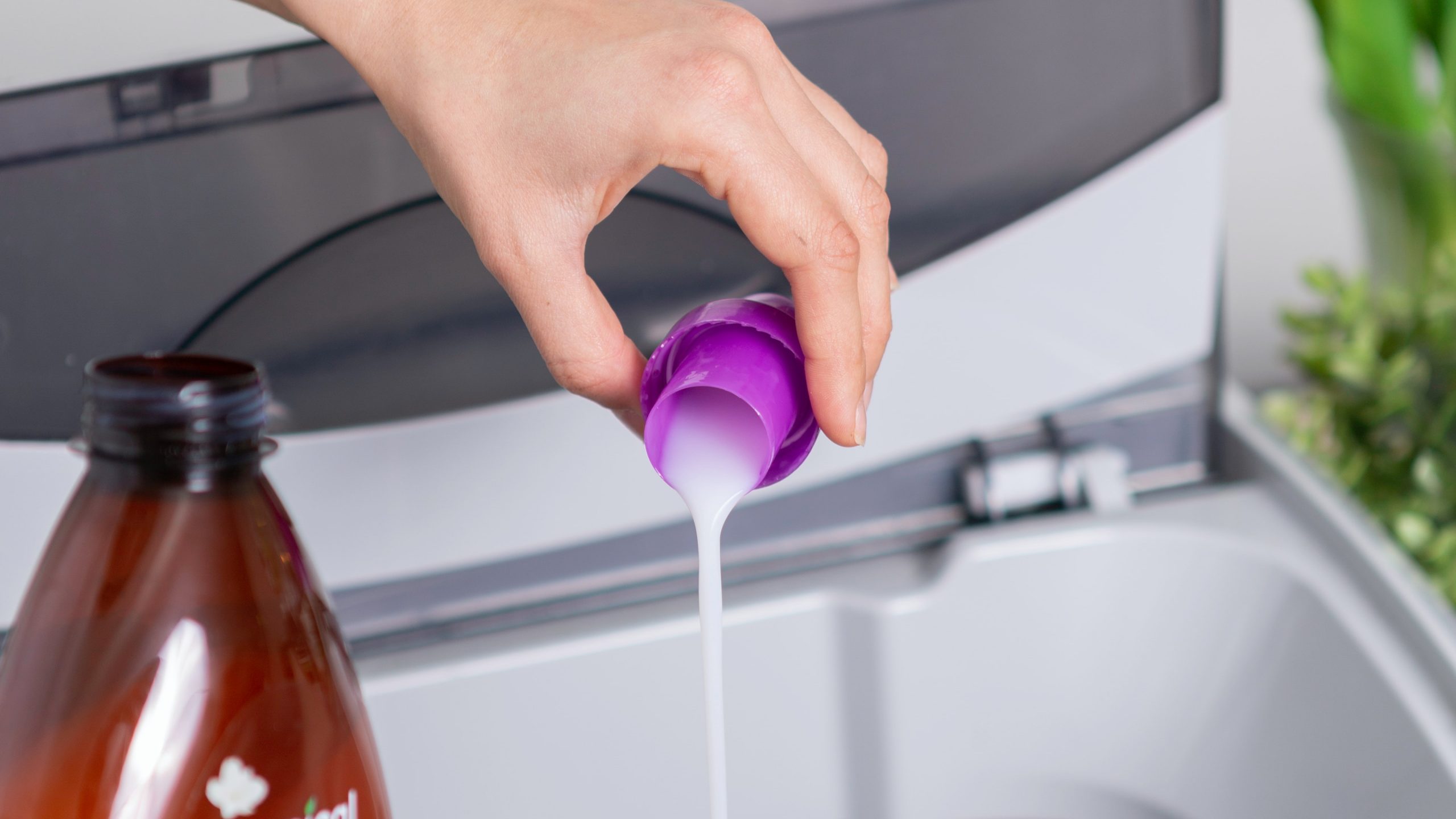
Conditioner serves as an alternative method for softening synthetic hair. Fill a basin with cool water and add a small amount of conditioner. Submerge the wig in the solution, gently swirling to ensure saturation. Rinse the wig thoroughly and blot excess water with a towel. Air dry the wig on a stand or mannequin head to preserve its texture.
Method #3: Vinegar Rinse

Vinegar offers an effective solution for softening synthetic fibers by eliminating chemical residues. Mix one part white vinegar with three parts water in a spray bottle and apply evenly to the wig. Allow the solution to sit for 10-15 minutes before rinsing thoroughly. Blot excess water and air dry the wig on a stand or mannequin head.
Tips for Softening Synthetic Wigs
-
Handle with care: Synthetic fibers are delicate, necessitating gentle handling during washing and styling.
-
Adhere to care instructions: Each synthetic wig may have unique care requirements, so adhere to the manufacturer’s recommendations.
-
Proper storage: Store the wig on a stand or mannequin head to maintain its shape, avoiding exposure to sunlight or humidity.
-
Utilize heat protectant: When styling with heat tools, employ a heat protectant spray to safeguard the fibers.
-
Exercise patience: Softening synthetic wigs may require time and diligence, so remain patient for optimal results.
Dyeing Synthetic Wigs: A Feasible Option
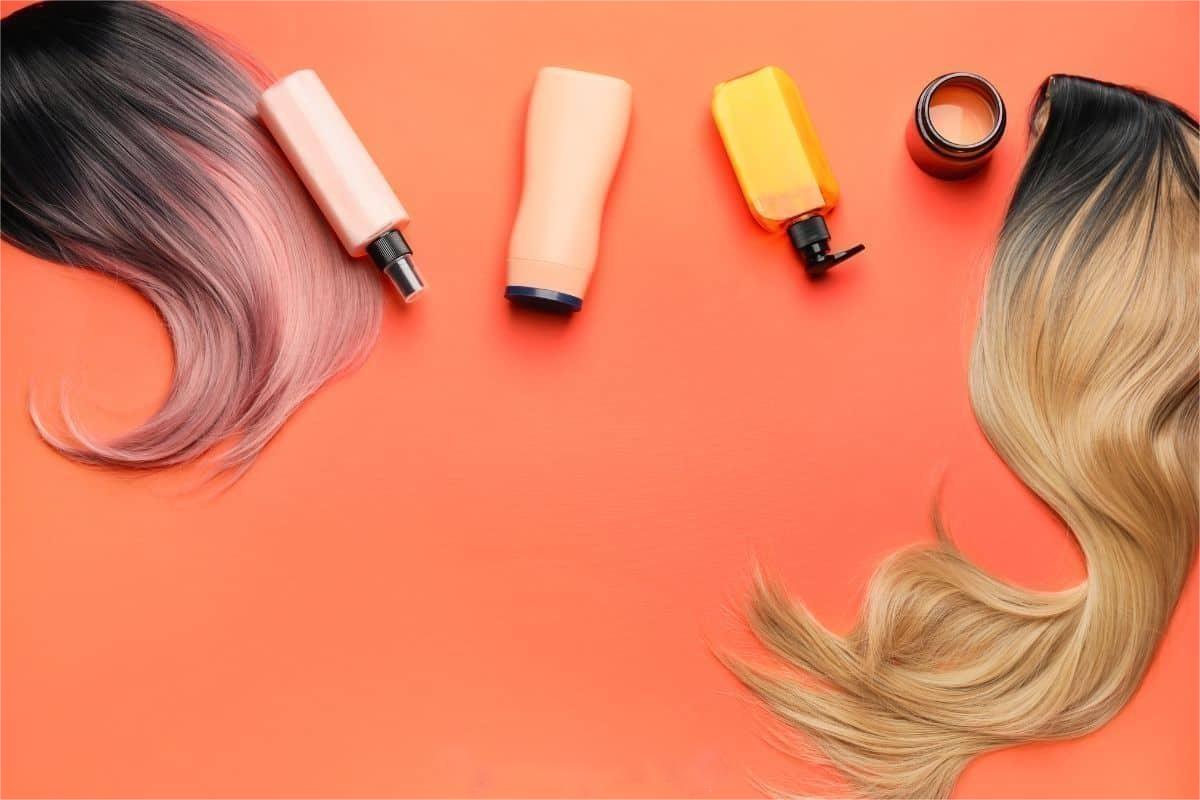
While dyeing synthetic wigs presents challenges distinct from natural hair, it remains a viable option with specialized products. Follow these guidelines for successful dyeing:
-
Product Selection: Utilize dye formulations specifically formulated for synthetic fibers, available as “wig dyes” or “fabric dyes.”
-
Preparation and Application: Ensure the wig is clean and dry before applying the dye. Follow package instructions meticulously, applying the dye evenly with a brush or sponge.
-
Rinsing and Drying: Rinse the wig thoroughly after the allotted time, blotting excess water with a towel. Air dry the wig completely before styling, exercising caution to prevent damage.
Conclusion
Achieving a natural appearance with synthetic wigs necessitates thoughtful product selection and diligent maintenance. Employing the techniques outlined above can significantly enhance the realism of synthetic hair, providing comfort and confidence to wearers. For further inquiries or personalized guidance on synthetic wigs, reach out to our team for a complimentary consultation. We’re dedicated to helping you look and feel your best.
Images credit: Google, Pinterest, Youtube.
